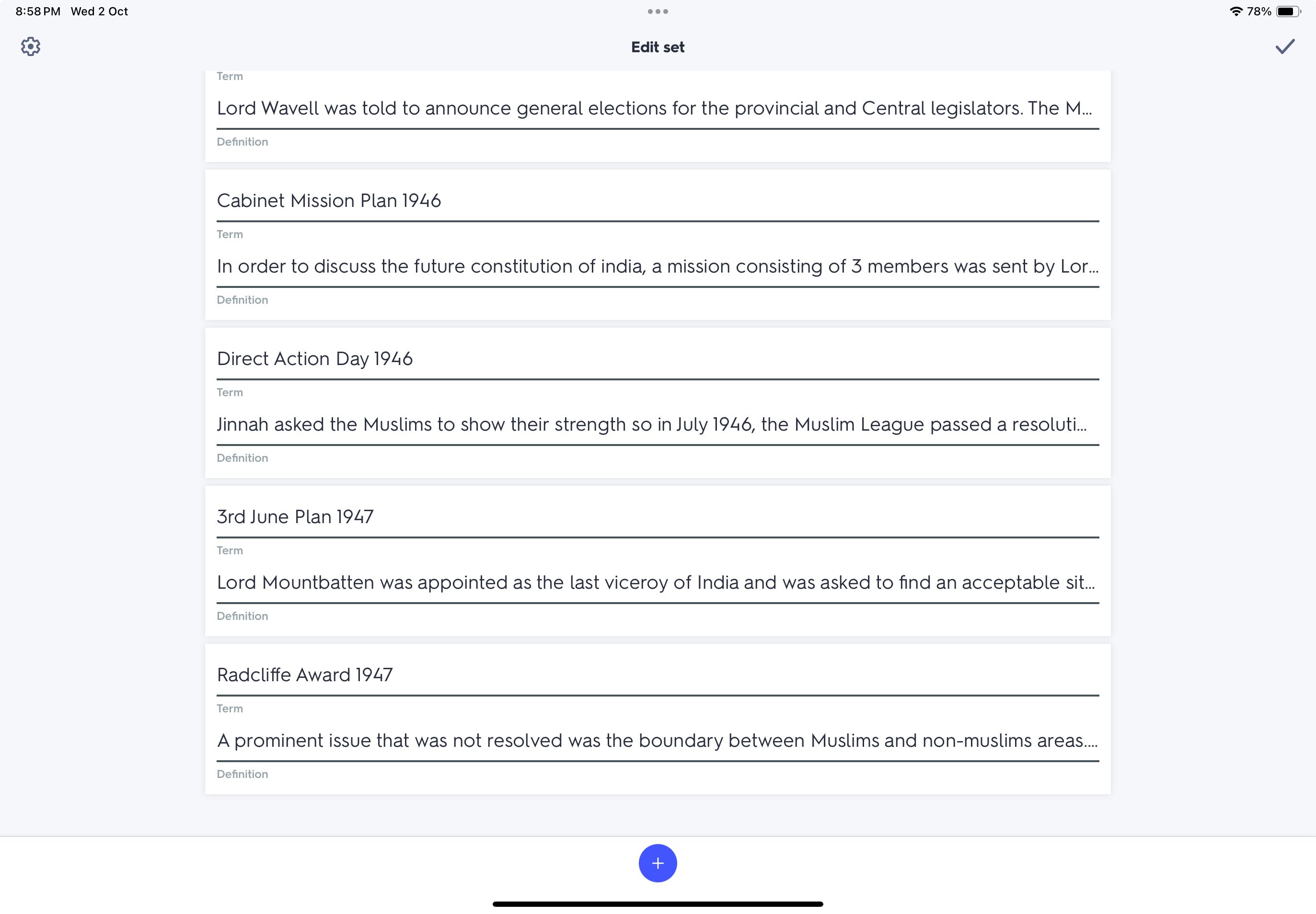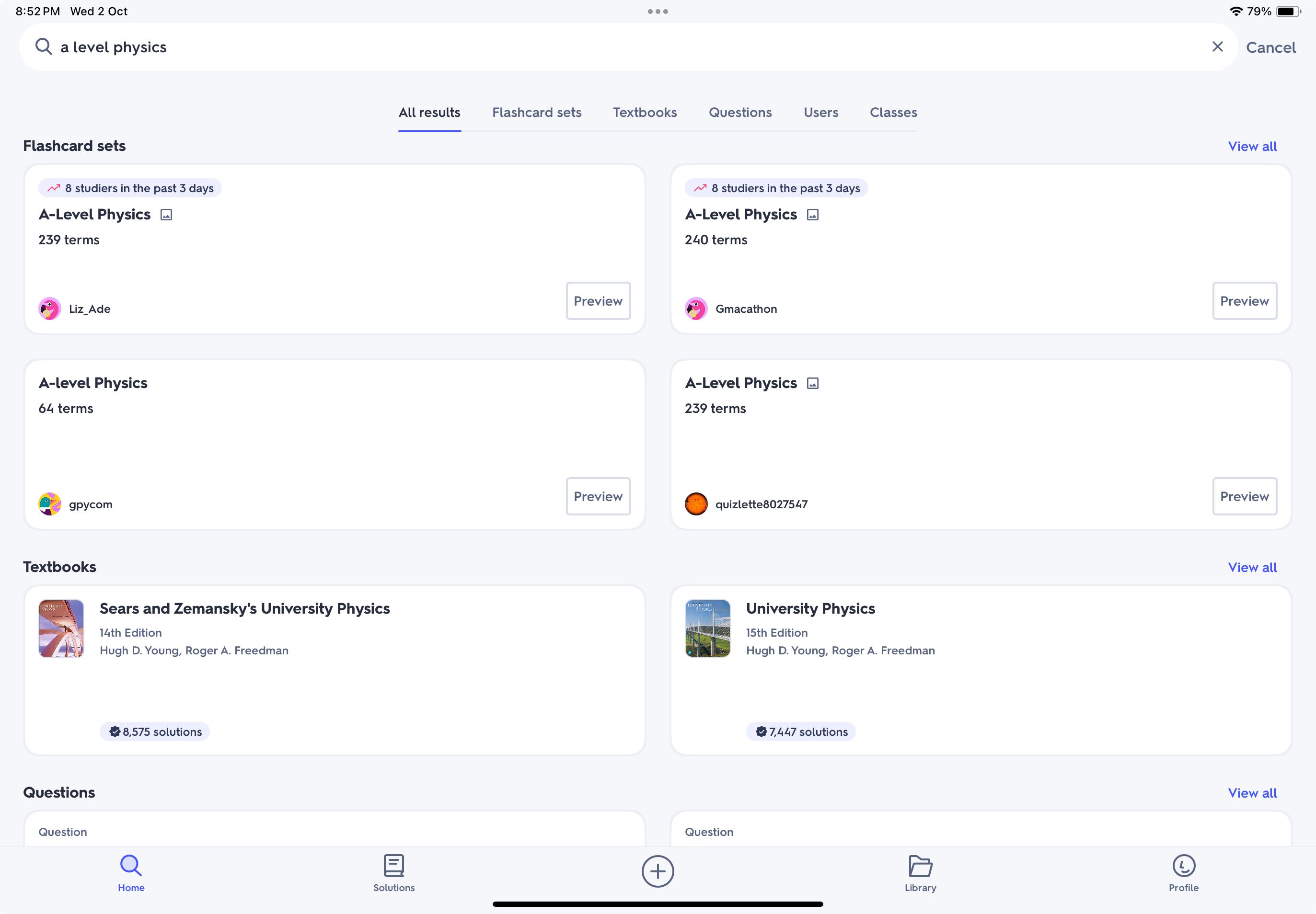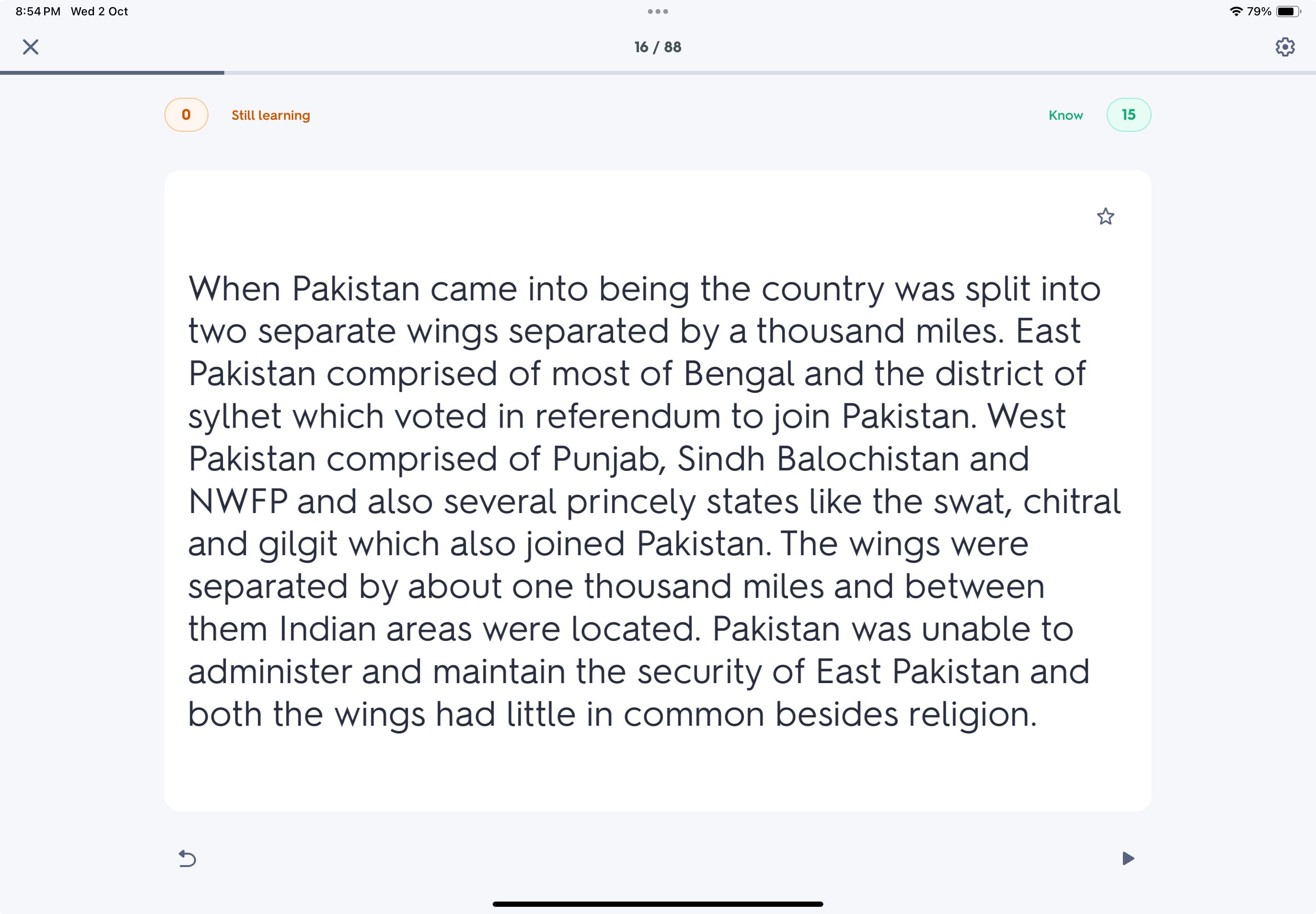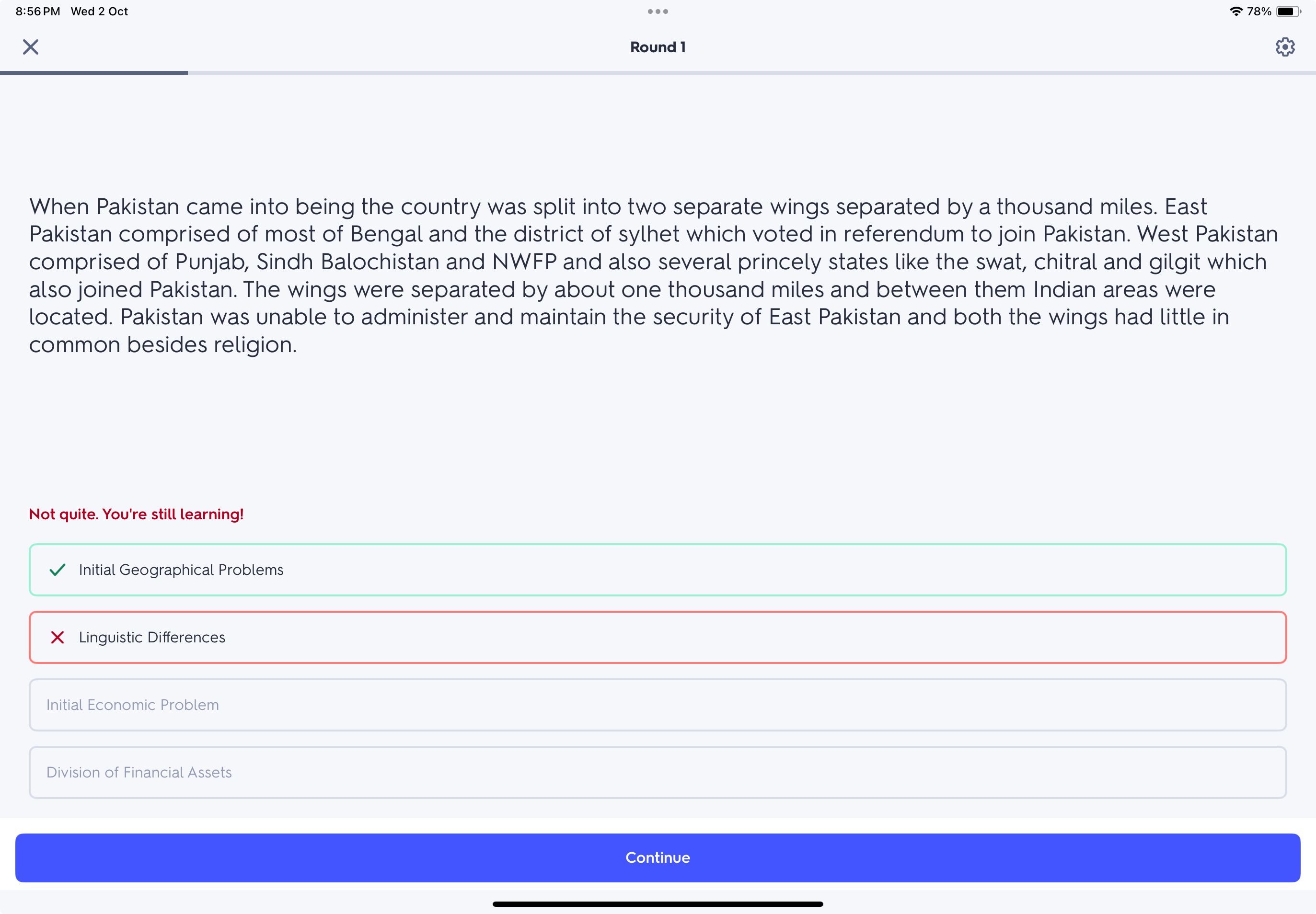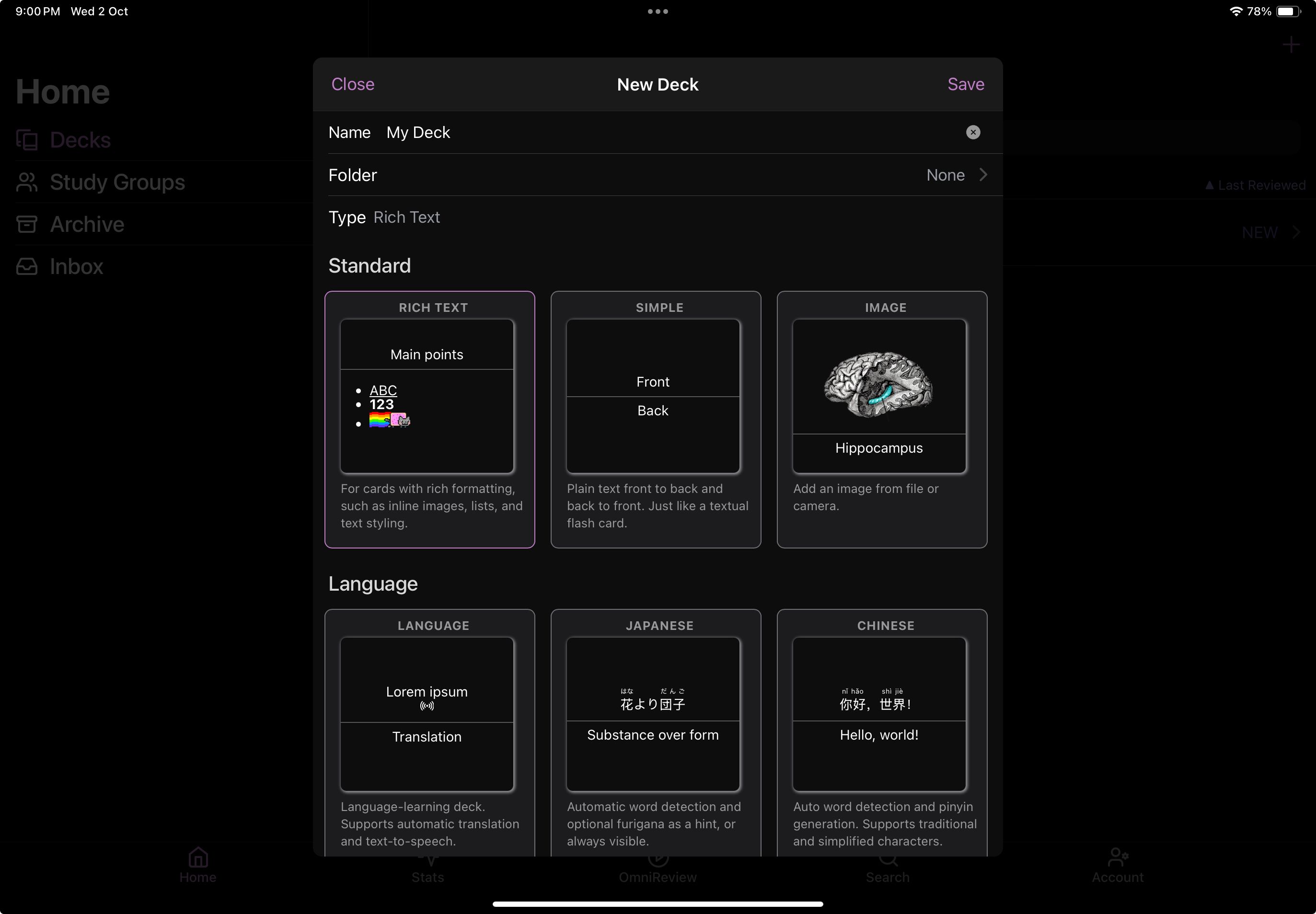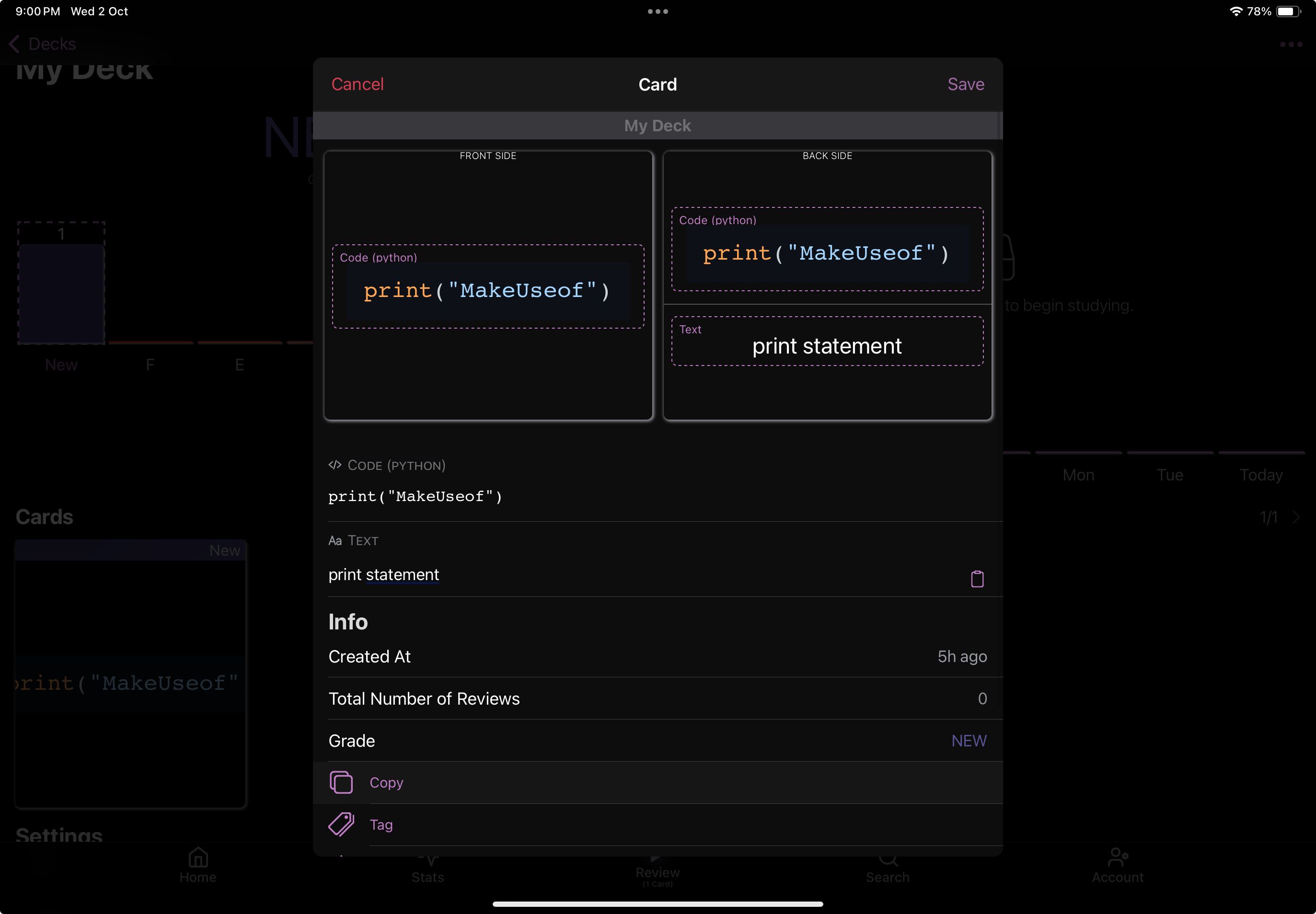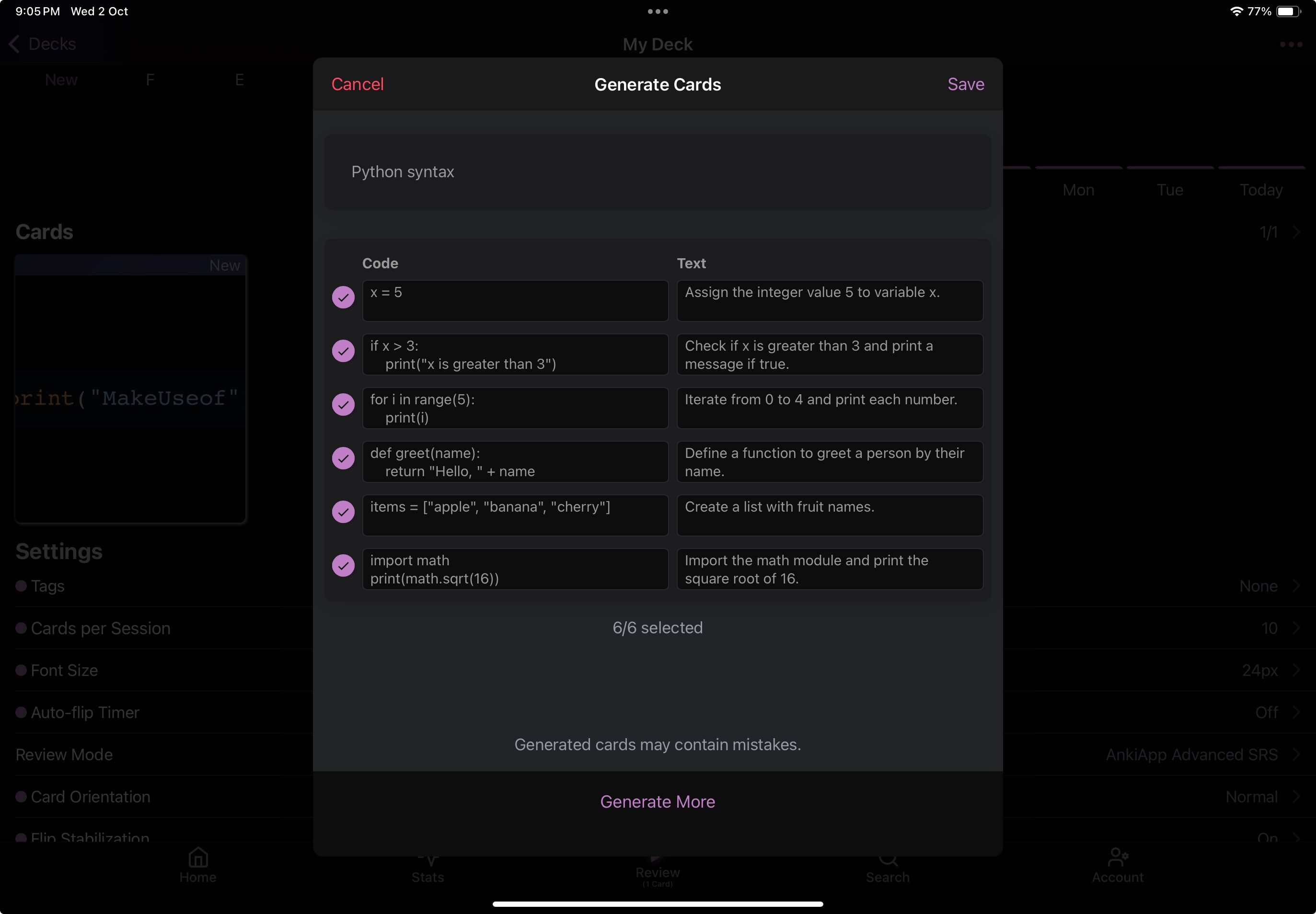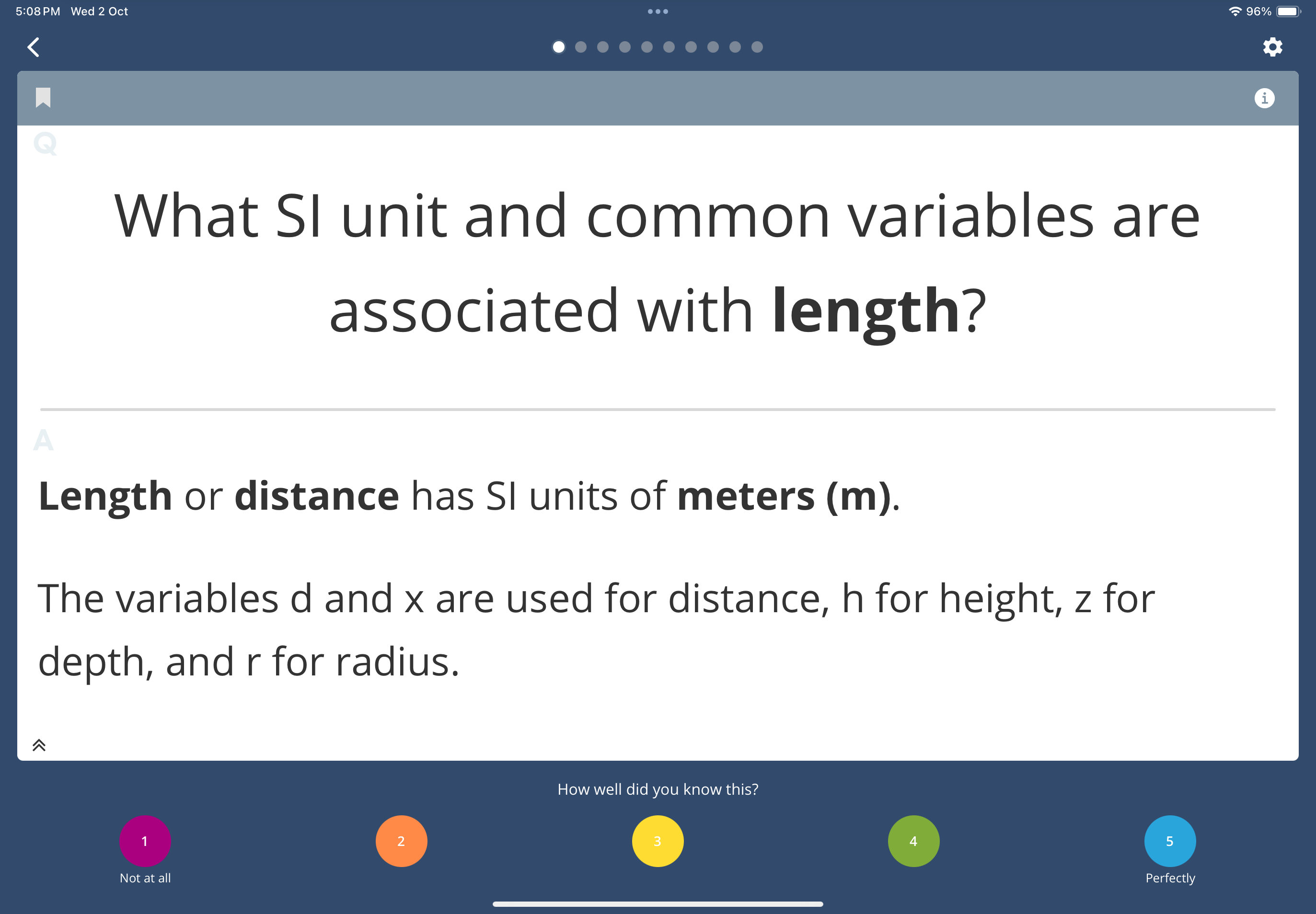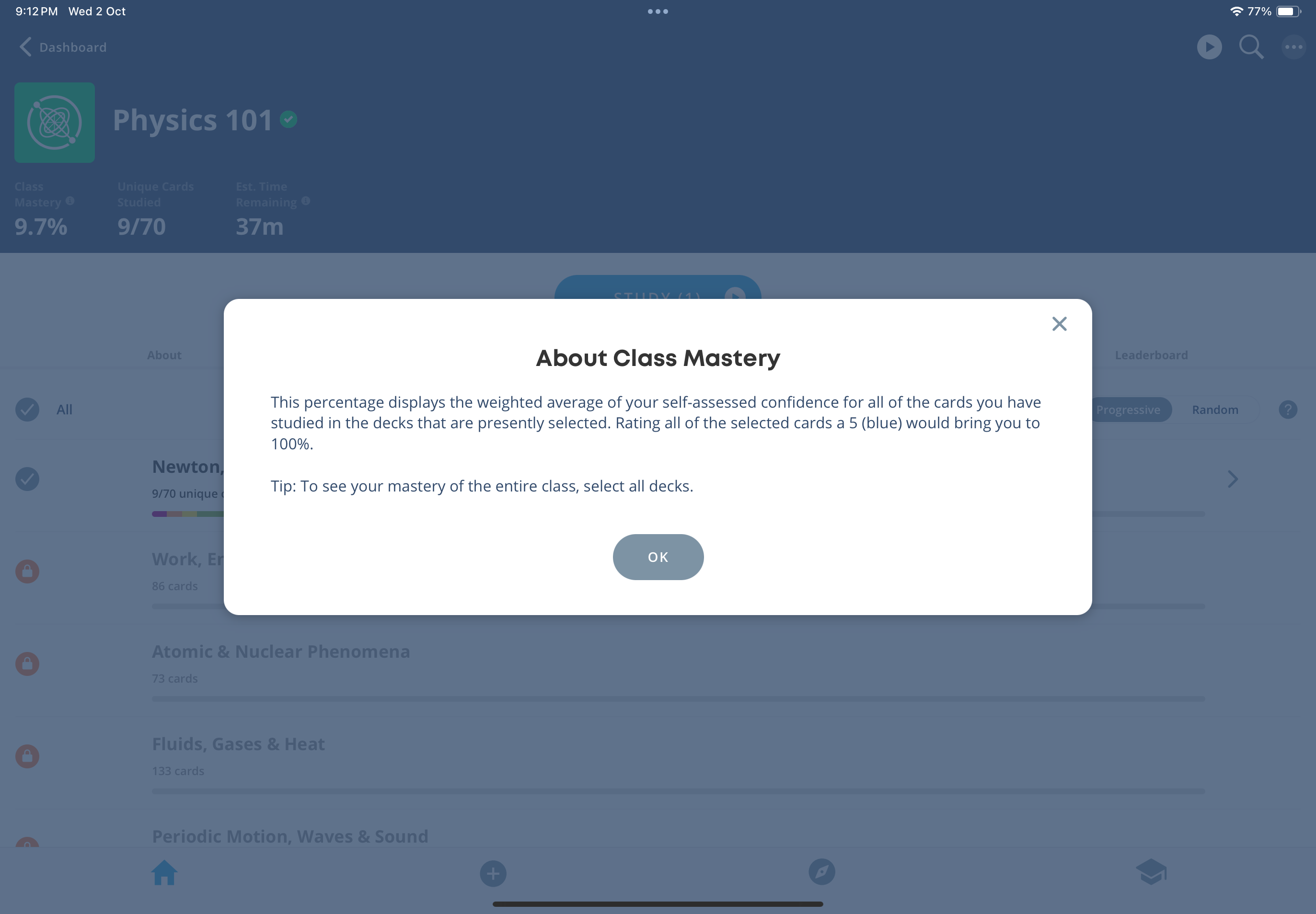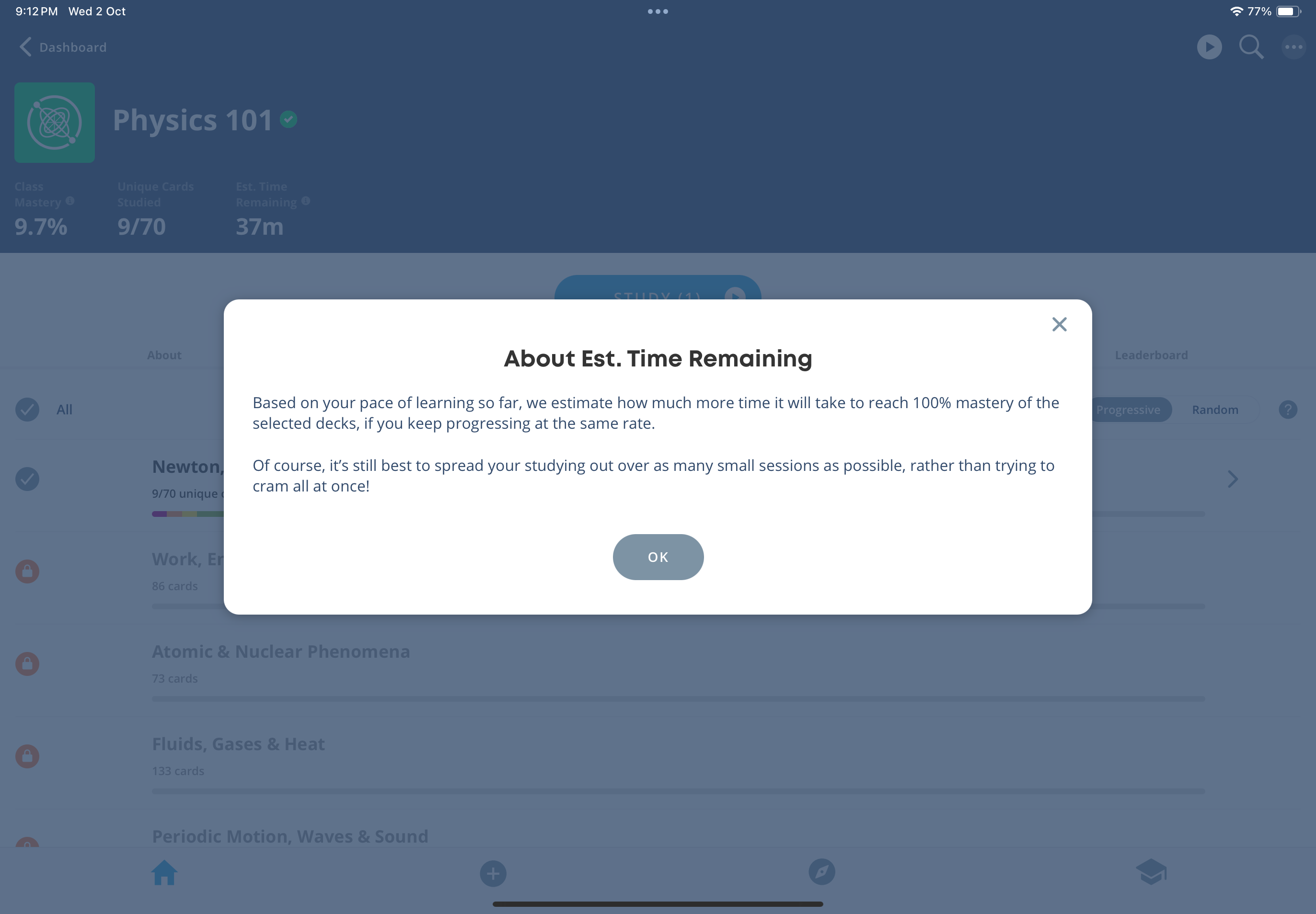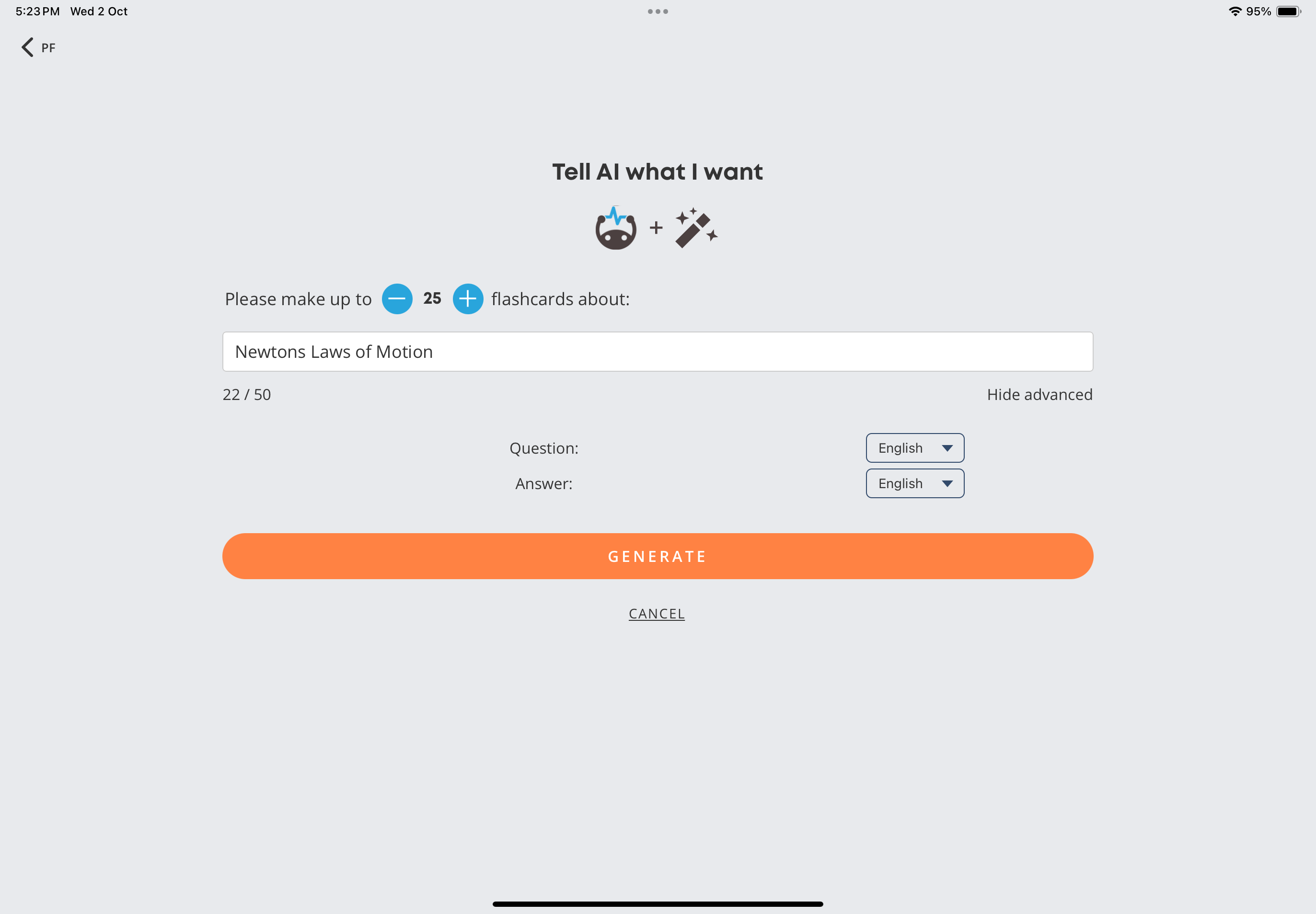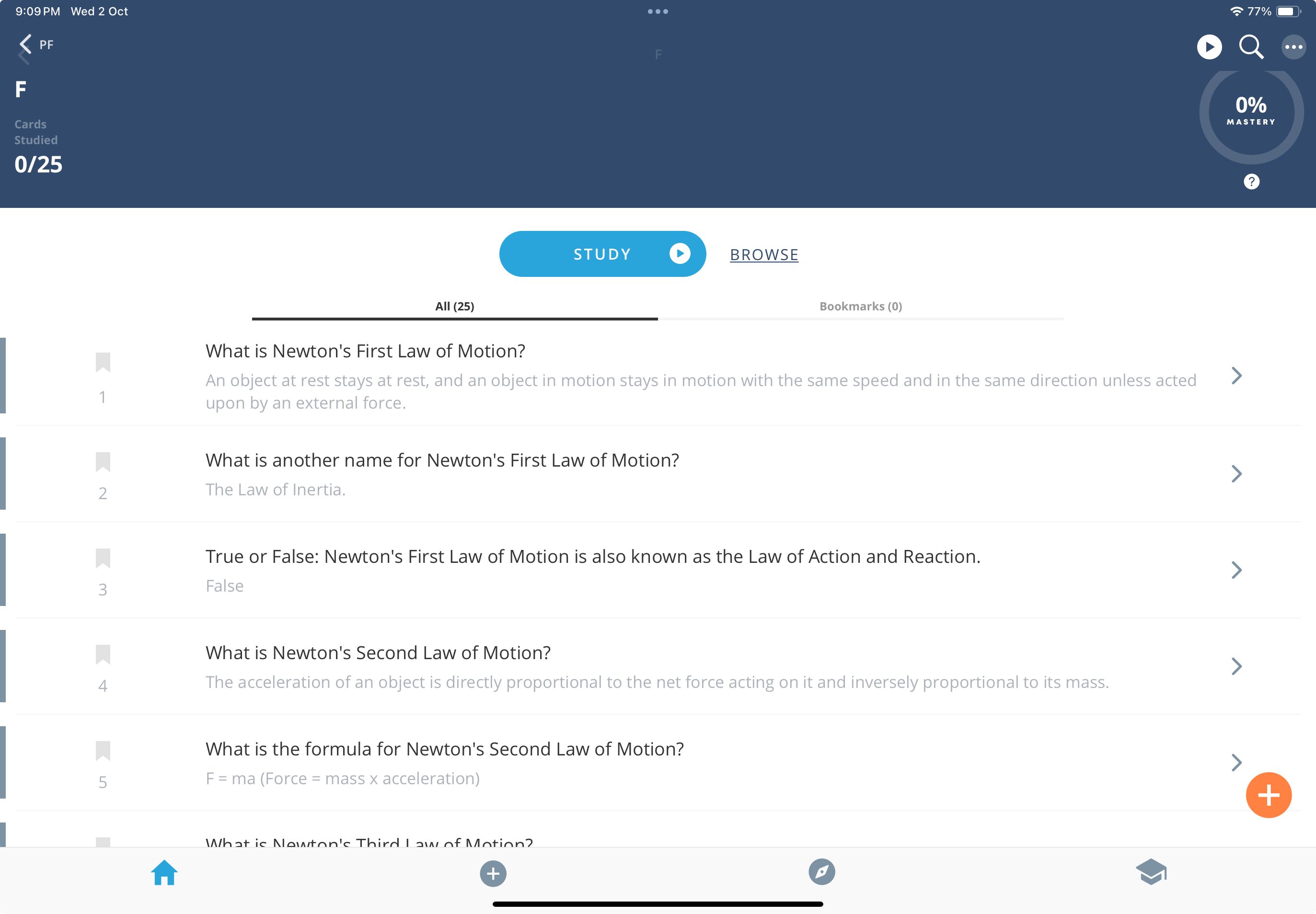As much as social media romanticizes pulling all-nighters, cramming months’ worth of content into one night, and chugging endless amounts of coffee, let’s face it: that’s a recipe for disaster. While it might work occasionally, it’s far from ideal for memorization-heavy courses. For those, I rely on digital flashcards, and here are three of the best free flashcard apps out there.
1 Quizlet
An app I’ve relied on since my first GCSEs is Quizlet, which I credit for helping me achieve straight A-stars. Its easy-to-use interface is the main reason I’ve stuck with it for years. With many other flashcard apps, you’ll notice a learning curve—you have to spend time figuring out how to create decks, format text, and navigate the app. Quizlet, on the other hand, is simple to use, with everything just a tap away.
Given the number of courses a high school student typically takes, not everyone has time to manually extract information from their notes and turn it into flashcards. Quizlet offers two solutions for this: Study Guides and access to 700 million premade flashcard sets from the community.
While premade decks are self-explanatory, Study Guides is an AI-powered feature that automatically creates a flashcard set for you once you upload your course materials. Unfortunately, Quizlet has locked quite a few features, including Study Guides, behind its Quizlet Plus subscription. As of now, Quizlet Plus costs $2.99 per month when billed annually or $7.99 monthly.
However, since I’ve always relied on the standard flashcard mode in Quizlet, the free version has sufficed for me. When I can’t find a premade deck for a course (which is rare), I take the time to create my own flashcards, and then use the Shuffle mode to study them in random order.
Quizlet’s Learn mode analyzes your current understanding of your course content and tests you accordingly with multiple choice and written questions. I find this mode particularly useful for mastering advanced theoretical concepts, and tend to use it only after I’ve gained some background knowledge using the standard flashcard mode.
In my opinion, Quizlet’s free version should suffice if you don’t plan on taking advantage of its AI-powered features like Study Guides. If you want to, you can also use an AI flashcard generator like FlashKa to streamline your study process and use a Study Guide-like tool without paying for Quizlet Plus.
Download: Quizlet for iPadOS | Android (Free, in-app purchases available)
2 AnkiApp Flashcards
While Anki’s desktop and Android apps are free, you need to pay a one-time fee of $24.99 for the iPhone and iPad app. I’m not usually against paying for an app that’s beneficial in the long run—after all, I paid $29.99 for a lifetime subscription to Goodnotes 6, one of the best note-taking apps for stylus users. However, most of my courses are more practice-based and conceptual, so the idea of paying $24.99 for an app with alternatives just doesn’t sit well with me.
AnkiApp, developed by AnkiApp Inc., isn’t affiliated with Anki but does a great job replicating what its best known for—spaced repetition. It offers three review modes: Advanced SRS, Random Shuffle, and In Created Order. My go-to is Advanced SRS, which brings up cards I haven’t mastered more frequently, and once I’ve memorized them, they appear less often.
This approach ensures the information is stored in my long-term memory, rather than just temporarily. AnkiApp uses a unique grading system, from F to A. You’ll only receive an A once you’ve fully mastered the material. While some might find this strict, it’s always motivated me to study harder!
AnkiApp’s formatting options are what truly impressed me. You can add images, change text color, and use different deck styles like Standard (Rich Text, Simple, Image), Language (for Japanese or Chinese), and Specialized (Audio, Equation, Code). As a computer science student, I find the Code block feature especially useful, with support for languages like C++, Java, Python, and more.
AnkiApp also has an AI-powered Generate Cards option. You can attach your handwritten notes, lecture slides, or provide a prompt and the app will automatically generate cards for you. I prompted it to create flashcards about Python’s syntax, and the app did a great job!
Some people online have complained that the app locks features with more frequent use, requiring a premium subscription. I haven’t encountered this, but if I did, I’d probably switch to another app or buy Anki’s official iOS app despite its dated interface, rather than paying $69.99 for a lifetime AnkiApp subscription or $29.99 annually.
Download: AnkiApp Flashcards for iPadOS | Android (Free, in-app purchases available)
3 Brainscape
Anki’s desktop and web app (not AnkiApp) has always been highly rated for its spaced-repetition algorithm. I’ll give credit where it’s due—Anki’s algorithm is excellent. However, I don’t enjoy adjusting the settings every time I sit down to study. This is where Brainscape comes in. It offers a solid spaced-repetition algorithm without the need to tweak settings.
When studying flashcards, you rate your confidence on a scale from 1 (Not at all) to 5 (Perfectly). The higher the rating, the less frequently you’ll see the flashcard, while lower ratings mean you’ll see it more often.
It also has a Repeat Card system, meaning even high-confidence cards (ones you rated highly) will occasionally reappear. My favorite Brainscape feature is the Class Mastery percentage, which shows the weighted average of your self-assessed confidence for studied cards. If you rate all your cards a 5, your deck mastery percentage would be 100%. I’ve found this system to be surprisingly accurate in reflecting my actual exam scores.
As someone who obsessively time-blocks every study session in advance, Brainscape’s Estimated Time Remaining feature is a game-changer. It tracks your learning pace and predicts how long it will take you to reach 100% mastery of a deck, helping me plan my study time more efficiently.
When it comes to creating flashcards, you have three options: manually type them, import pre-existing cards, or use the new “Tell AI What I Want” feature. With this, you simply specify the number of flashcards and the topic, and AI does the rest. For example, below I asked Brainscape to create 25 flashcards on Newton’s Laws of Motion.
It generated a mix of definitions, true/false questions, and formulas, all of which were incredibly useful.
The best part? Creating your own flashcards on Brainscape, even with the AI feature, is completely free. With Brainscape Pro—priced at $19.99 monthly, $59.99 annually, or a one-time fee of $199.99—you can add images and sounds to flashcards, bookmark specific cards, study the back before the front, restrict access to your cards, and more.
While adding images to flashcards might be helpful for pre-med students, I wouldn’t use it even if it were free—so if you’re like me, Brainscape’s free version is more than enough, especially if you don’t want to subscribe to Quizlet Plus or AnkiApp’s premium version.
Download: Brainscape for iPadOS | Android (Free, in-app purchases available)
At the end of the day, it’s all about finding the tool that fits your learning style and makes studying more effective and enjoyable for you. An app that works for everyone else might not work for you, and there’s nothing wrong with that!

